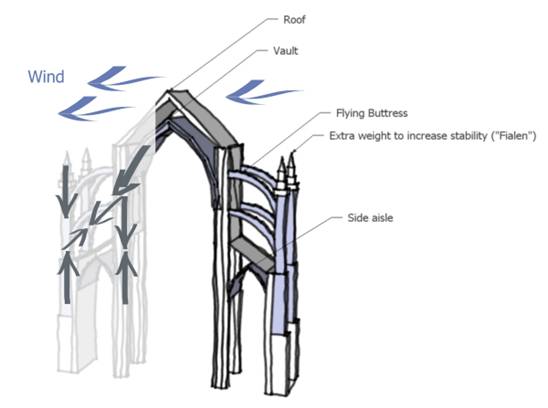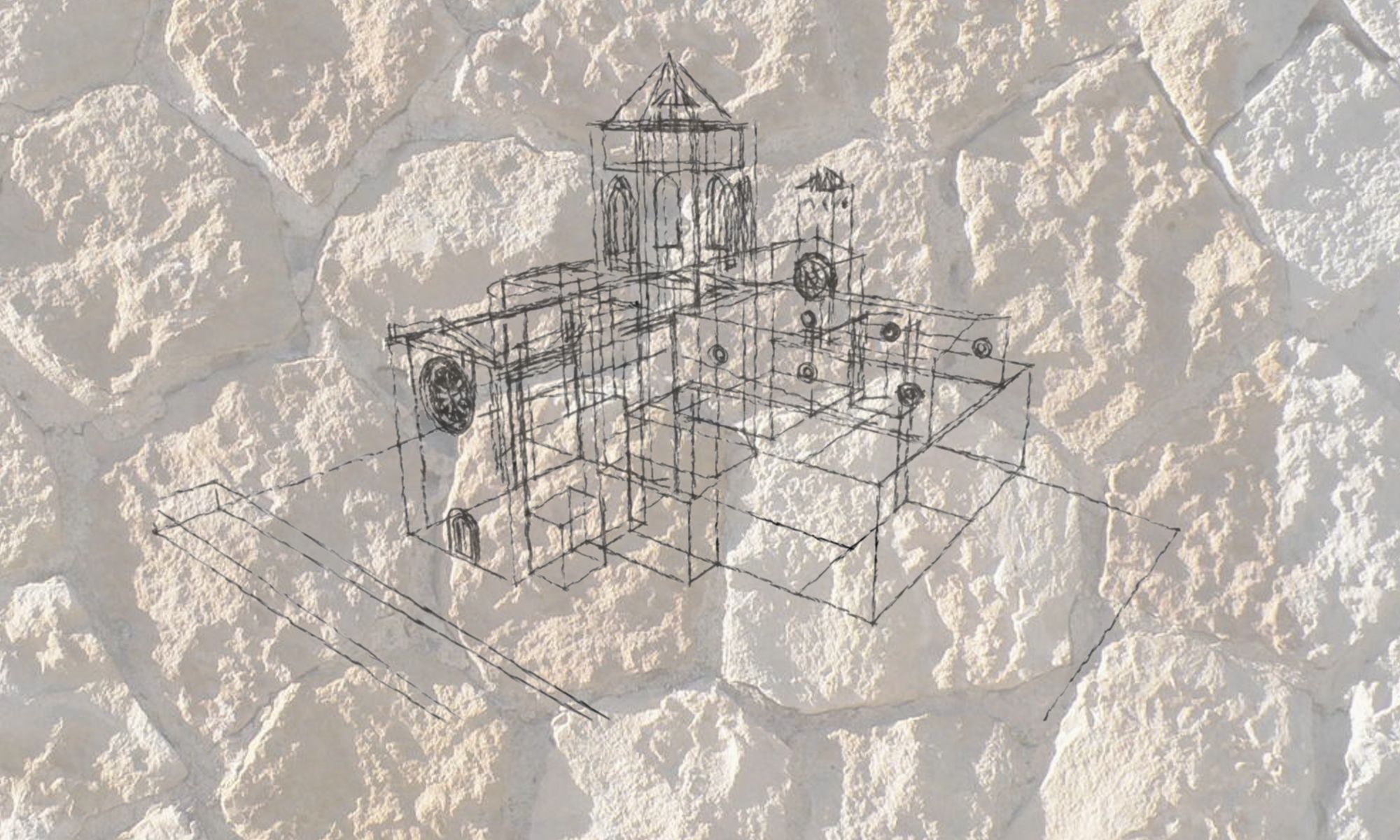Approx until year 500 AD (fall of west-roman empire) : The ancient roman basilica served as an example for early christian churches which were built after the “Edict of Milan” (Toleranzedikt von Mailand, it “declared that the empire would be neutral with regard to religious worship, officially removing all obstacles to the practice of Christianity and other religions”). In the ancient world a longish peristyle with side aisles was used for meeting– and jurisdiction purposes. This style was adopted for the first early christian churches with a heightened nave (see source [1a]). These first churches usually had a wooden ceiling and no vault but there were exceptions like the „Basilica of Maxentius“ in Rome (307-313 AD) source [1b]. The eastern side was usually equipped with a semi-circled apsis.


Approx 5. Century until 900 AD : Merovingian und carolingian period, in terms building history a form of pre-romance (e.g. the Pfalzkapelle in Aachen, Germany, today cathedral of Aachen). Therefore ancient structures were used as an example and then modified.
Approx. Year 900-1250 AD: Romance. Typically round arches and dark, fortress-style churches
Approx. Year 1140-1550 AD: Gothic, usually divided into early gothic, high gothic and late gothic period. In 1140 abbot Suger erected the abbey church St. Denis in France in gothic style. That revolutionary new style then spread across Central and Western Europe, from 1230 AD on also found in Germany (Elisabethkirche in Marburg, Liebfrauenkirche Trier)
A church built 700 years ago would be in the gothic period. The gothic style came from France and spread further and further across central and western Europe. Very typical for the gothic style is among others the pointed arches which solved a big problem of the romanesque builders : with round arches the spanned distance automatically defines the height of the arches; the gothic system offers far more possibilities for height and width of arches, windows and so on. The gothic style stands for height and airyness. The gothic concept tried to find a counterforce to all originating forces whenever possible at the place where the apply. Example : columns were seen as thin „bars“, instead of massive columns that could cope with forces from all directions. If shear forces apply (e.g. caused by the vault) they were eliminated by counter forces e.g. by buttresses outside.


Approx. 1500-1650 A.D: Renaissance, influenced by ancient greek and roman styles with the focus on optimized, harmonic proportions.
